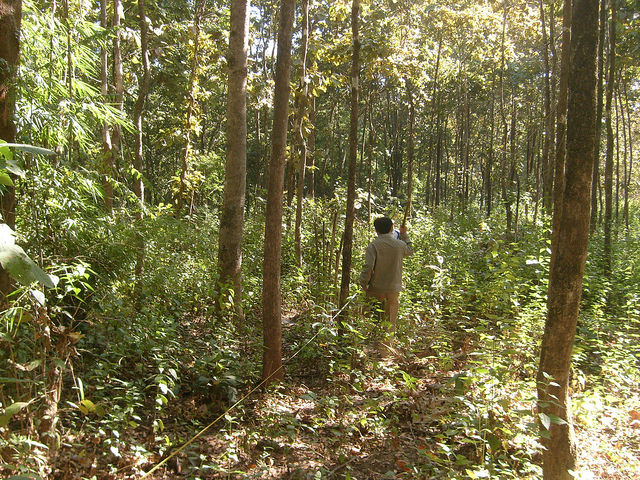A recent info brief published by UN Environment examines the economic and financial benefits of a deforestation-free approach to lending and investment in Myanmar. It provides recommendations for financial institutions on how to reduce their exposure to the forest-related risks arising from their clients/investees’ activities.
What does the info brief find? Firstly, forests provide direct and indirect value to many vital sectors, including water, tourism, energy, industry, agriculture and fisheries. The combined value of the services that forests provide to Myanmar's economy has been estimated at US$ 7.3 billion per annum. While forests are a renewable natural resource, they are also exhaustible, subject to overexploitation and mismanagement – this is a critical concern in Myanmar, which recorded the third largest area of deforestation globally from 2010-2015.
Secondly, forests may feature significantly on the balance sheets of banks and other financial institutions without even being aware of it. This can expose banks to risks related to deforestation and forest degradation in the form of operational risks – from clients/investees’ dependency on forest-generated inputs, or regulatory/reputational risks – as an extension of the impact that their clients/investees have on forests. The impacts- or dependencies- of these forest-related risks can affect standard financial performance metrics of the banks' underlying assets. Potential environmental and social risks may not be evident at the time of approval of a financial transaction, but may become so during execution.
Taking the example of banks exposed to agricultural supply chains, risks can manifest at the portfolio level. In July and August 2016, floods covered one million acres of farmland in Myanmar, destroying 500,000 acres of crops. This resulted in thousands of farmers defaulting on loans from the Myanmar Agricultural Development Bank (MADB). As a result, the MADB had to reduce the volume of loans it extended the next year. This scenario was repeated during this year’s fatal floods in Kayin State, which were linked to deforestation and led to the death of 12 people and displacement of 74,000 people. Similarly, deforestation and forest degradation increase the rate of sedimentation in waterways, which can pose as an operational risk to hydropower generation by reducing the quantity of electricity that can be generated. It also increases operational costs of generation, due to increased sediment management activities or expensive remedial measures, such as dredging.
Negative consumer attention has increasingly fallen on the role that lenders play in providing debt to companies that contribute to deforestation, therefore reinforcing reputational risks for financial institutions. If customers switch to other financial institutions that offer products with lower ecosystem impacts, there are direct impacts on the banks. Quantifying the impact of reputational damage is difficult, but in an increasingly crowded global marketplace, global banking institutions are beginning to regard the risk of negative media attention seriously.
What can banks do to mitigate risks? With issues such as climate change generating previously unidentified forms of risk, financial institutions need to be proactive in the identification, assessment, and management of all forms of environmental and social risk- before they become significant and result in an economic loss for a client or investee.
Financial institutions can reduce their exposure to risks by (i) ensuring they have a clear understanding of the potential environmental and social implications of their clients/investees in the context of the transaction, and (ii) ensuring that clients/investees’ financial and operational sustainability is not undermined by adverse impacts on the environment and surrounding communities. Robust policies and due-diligence processes will help provide protection to the regulatory and reputational risks generated by deforestation and forest degradation. Strong policies can also provide a signal to the wider market that the bank has implemented good governance on forest-related risks and is taking serious steps to reduce its exposure in environmentally sensitive areas.




